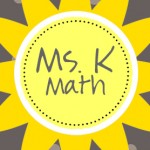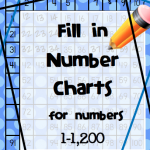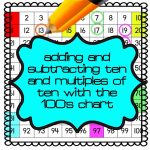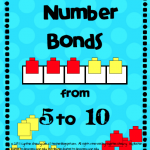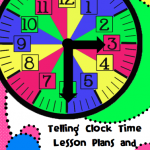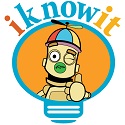Do Your Pencils Need a Trip to the Gym?
Since my classroom has “marker heaven” and “marker jail“, we thought it could use a pencil gym. This is a place where pencils go to get into shape. This would also be knows as the pencil sharpener. I hope you can incorporate some of this fun into your classroom!

Happy Easter!

Students love the mystery when you hide any kind of items that take them away from the traditional pencil and paper work of the classroom. Take advantage of this when Easter comes around and hide things inside eggs and place them around your classroom or nearby outside. Questions could be stuffed inside eggs. Clues could be stuffed inside eggs. Use the fun of the spring season to boost mystery in your lessons! (Also, snatch up some plastic eggs on clearance when Easter is over at a fraction of the cost!)
Do Your Students Not Follow Directions? Try this!
To increase efficiency, when I am teaching very young children such as in kindergarten, I do this. After my lesson, I say, “okay, step one think.” I elaborate on what I want them to think about. I hold my finger up to my temple and tap it like I am thinking. I see the children imitating this when they go back to their seats from sitting at the carpet.
Then I say, “Step two glue.” (or whatever I want step two to be.) I hold my hand out in front of me and lightly slap the back of my hand like I am gluing something down. The children do this with me.
Then I say, “Step 3. add details.” I hold up both of my index fingers like I am making little dots everywhere with my fingers. After I have explained everything I want the students to do, I have the students repeat the whole process with me. It sounds something like this…
“Okay, what is step one?” The students tell me with hand motions.
“What is step two? The students tell me with hand motions.
“What is step three? Again the students tell me with hand motions.
Then I send them to their seats and they sometimes get the directions out of order, but it is easy to refer to the step one, step two, or step three because they remember when they are listed succinctly like that. I have had a lot of success with students following directions in this step one, step two, and step three fashion. Most children can hold three things in their minds to work towards. I hope this helps improve your classroom management!
Can You Find Lucky the Leprechaun?
Part 1
Sometimes you just have to do things that are fun to make your own self enjoy your job. The stress of multiple meetings, testy parents, and paperwork can wear on you. To help myself enjoy work, I do something just for FUN that the kids will love because it makes me happy!
So this week I bought two leprechauns at Hobby Lobby, a fun hat, and some shamrock stickers. I cut out a bunch of shamrocks die cuts and a sign that says, “Where is Lucky the Leprechaun?”–all of which I stuck to the wall. I hid the little leprechaun statue outside in a small bush near my door. The students have been looking all over for it. They needed a little mystery and fun before spring break! Truth be told. So do I. After two days no one has found the leprechaun. We will see what tomorrow holds.

Part 2
Okay so I normally go overboard! This week is no exception. I brainstormed one morning while fixated on my leprechaun scavenger hunt idea. I made some clues for my classroom so the students could eventually be led to the leprechaun and his pot of gold. Here are my clues. Maybe you can use these and adapt them to your room to make your own classroom hunt. I taped each clue in succession onto different items to help students find the leprechaun.
- Dear Children, Is the leprechaun too old or is he just hiding his gold? Take some TIME to follow the clues he left behind. (hide near clock)
- Don’t give him an inch! He might be under the bench. (hide under bench)
- Where does a leprechaun live? Under a rainbow or does he share a house with a mouse? (side under a computer mouse)
- Sneaky little guy! Could he have left some of his stash near the trash? (hide near trash can)
- Is he able to hide under the table? (hide under table)
- Beware he might even be under a chair! (hide under chair)
- At night he likes to lie on a pillow and sometimes he can be found looking out the window. (hide near window))
- Oh no! Danger! He likes to climb on a cord that’s near the board. (hide near board)
- Ah! You caught him!!Leprechauns want you to show you care by taking time to share. (Share all of the gold with your class.)
I had two leprechaun searches going. One outside in a bush for anyone who walked by (with no written clues) and another in my room for my students. The clues in my room I taped to their respective spots. I used Rolos chocolate candies in a small plastic cup for the leprechauns pot of gold. In essence your really could do any search hunt with these clues. Have fun and enjoy!
Part 3–after the hunts…
The outdoor hunt, which was for anyone who walked by, needed some extra information for students to find the actual leprechaun. I hid him in too difficult a place. I didn’t think it would be that hard. I came outside the last hour of the day and gave the students oral clues to help them find him. I gave the other students looking at the same time some shamrock stickers–not quite a pot of gold but still fun for all. I did give the winner some “gold”. If the students actually searching outside had been my students, I would have put more thought into making up written clues.
The classroom hunt took about 10 minutes and we still had time to do my main lesson. I would do the indoor one again for which I posted the clues above.
Marker Heaven
Now, you all know you have markers that dry up. We have a community supply of markers in my room so, when one dries up, I have been asking students to put them in “marker heaven”…aka the trash can. The students find it amusing and it still makes me smile under my breath.

More recently, I thought I might should save the almost dried up markers that don’t color so well. I remembered the “marker bots” we had made a few years ago realized I had saved the almost dried up markers for this. I exclaimed, “Oh no!” during one class and told children we needed to save them somewhere. One child said, “Marker Jail, ” and so there it was, marker jail was born. Maybe marker purgatory would have been more appropriate, but I loved the child’s idea. Children who weren’t in the same class began inquiring about the marker jail. I love the curiosity it has generated. I used a random box top lid for marker jail because it was what I had nearby. Use whatever container you like. I hope this idea spreads a little fun in your classroom.

The Results are In!
I promised you results from the strawberry jars a while back. While the strawberry jars did not stink near as badly as the rice jar experiment I did previously, they didn’t reveal quite as important a message in my opinion. You could again definitely tell a difference in the scent of the jars, but the inside of the jars looked very similar. When I started this experiment all of the jars had fresh strawberries, so it is certainly possible there could have been a difference in bacteria etc. on the strawberries. If I were to do this again, I would have used frozen strawberries to make sure this wasn’t a factor. What surprised me the most is that the love jar smelled worse, in my opinion than the hate jar. There is probably some explanation for this. If I were to use fruit again, I would have used the blueberries. Also, if it was the first time for the experiment, I would have used the rice because they all smelled different and looked different reflective of the words love and hate.

Here are the backs of the jars pictured in the same order.

The 2024 Creativity Challenge…
On January 1st, I shared with you an idea you could use in your classroom to start the year off. Students could imagine the numbers in 2024 to be other items besides numbers. I am really proud of some of the results from this activity. See how their creativity blossomed….
left to right top to bottom… shield, potato, fish (look how perspective was used as this student turned the page), archer, hourglass, hotel and white beach, hanger (again page was turned as this student used perspective).
When I taught this lesson, I used an idea from a previous year that I got from the Carly and Adam website.

Happy 2024!

I am personally looking forward to this year in many ways! Last year, I saw the idea somewhere to make something out of the numbers 2023. I decided to do something similar with some of my beginning of the year lessons this year. What can you create from the numbers 2024? This I great for children’s creative thinking. Try different fonts on your computer and see if it sparks different creative thinking ideas. What if students make a reflection from the numbers 2024? What if students make pictures of the 2024 together? What if they use the numbers individually? What if they turn 2024 sideways? What if they turn it upside down? Do they see different pictures? You will likely have a child say they they messed up. Sometimes those are the best opportunities for imagination!
Enjoy your year! 🙂
